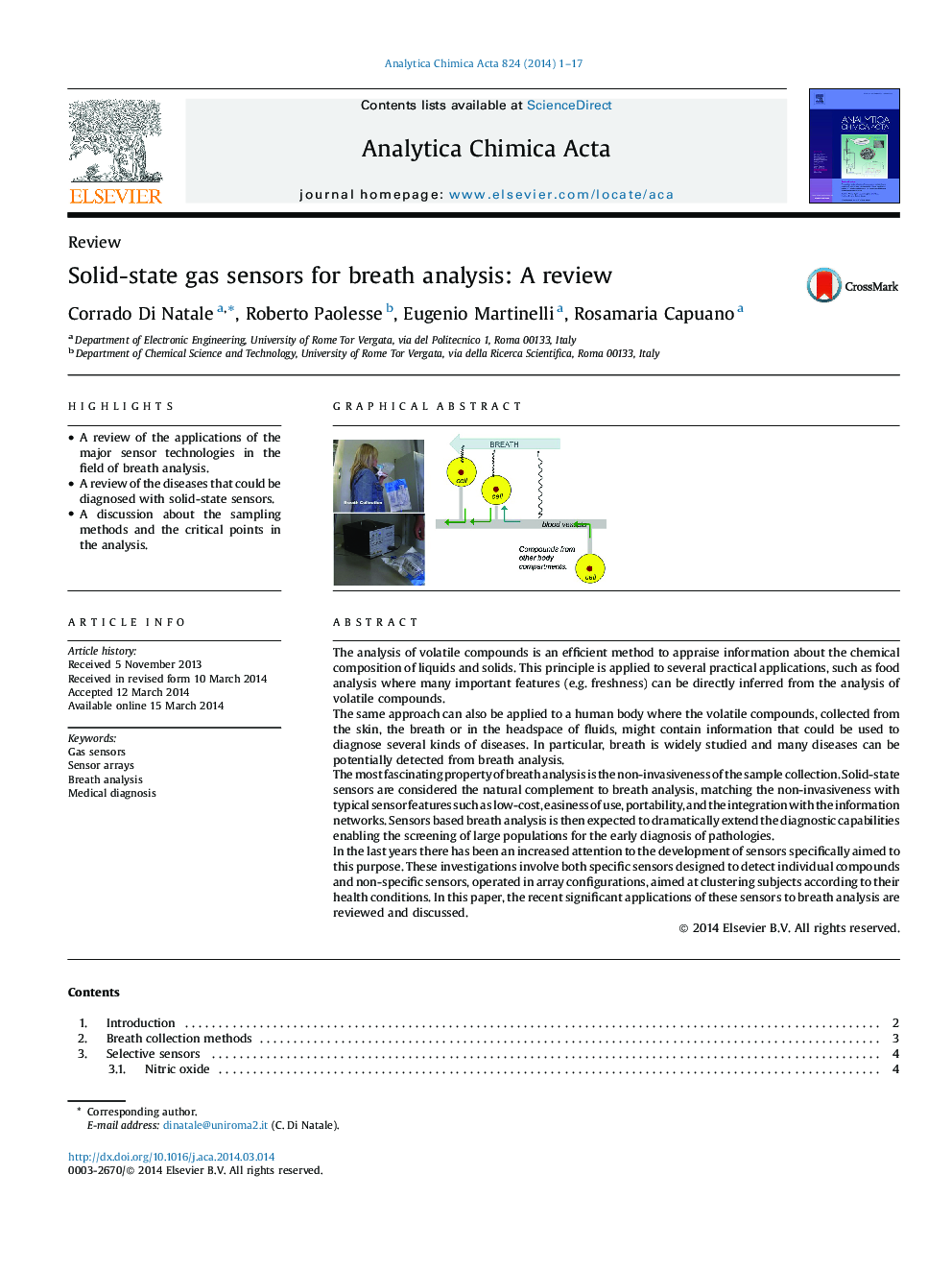| Article ID | Journal | Published Year | Pages | File Type |
|---|---|---|---|---|
| 1164114 | Analytica Chimica Acta | 2014 | 17 Pages |
•A review of the applications of the major sensor technologies in the field of breath analysis.•A review of the diseases that could be diagnosed with solid-state sensors.•A discussion about the sampling methods and the critical points in the analysis.
The analysis of volatile compounds is an efficient method to appraise information about the chemical composition of liquids and solids. This principle is applied to several practical applications, such as food analysis where many important features (e.g. freshness) can be directly inferred from the analysis of volatile compounds.The same approach can also be applied to a human body where the volatile compounds, collected from the skin, the breath or in the headspace of fluids, might contain information that could be used to diagnose several kinds of diseases. In particular, breath is widely studied and many diseases can be potentially detected from breath analysis.The most fascinating property of breath analysis is the non-invasiveness of the sample collection. Solid-state sensors are considered the natural complement to breath analysis, matching the non-invasiveness with typical sensor features such as low-cost, easiness of use, portability, and the integration with the information networks. Sensors based breath analysis is then expected to dramatically extend the diagnostic capabilities enabling the screening of large populations for the early diagnosis of pathologies.In the last years there has been an increased attention to the development of sensors specifically aimed to this purpose. These investigations involve both specific sensors designed to detect individual compounds and non-specific sensors, operated in array configurations, aimed at clustering subjects according to their health conditions. In this paper, the recent significant applications of these sensors to breath analysis are reviewed and discussed.
Graphical abstractFigure optionsDownload full-size imageDownload as PowerPoint slide
